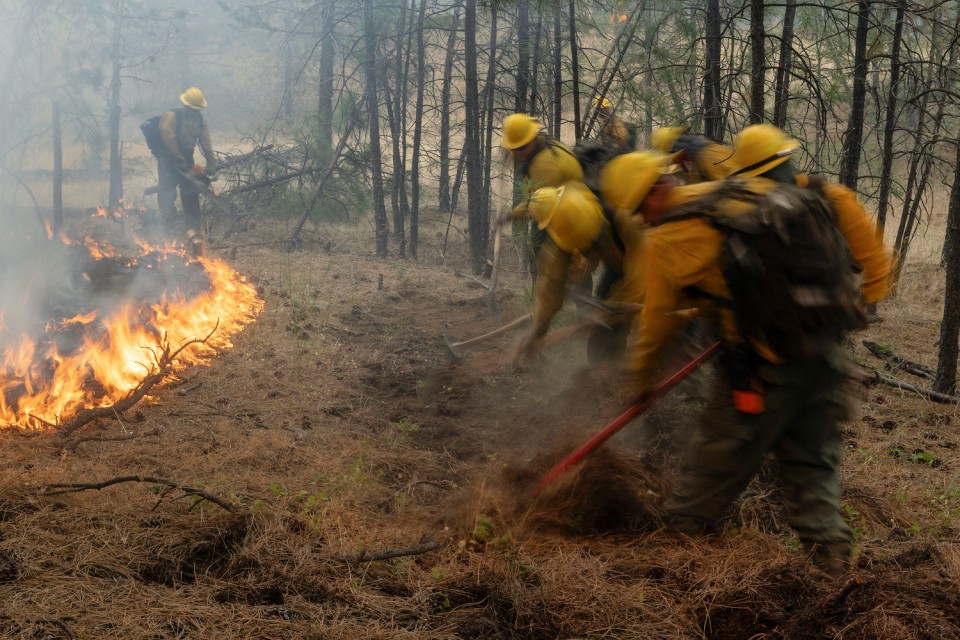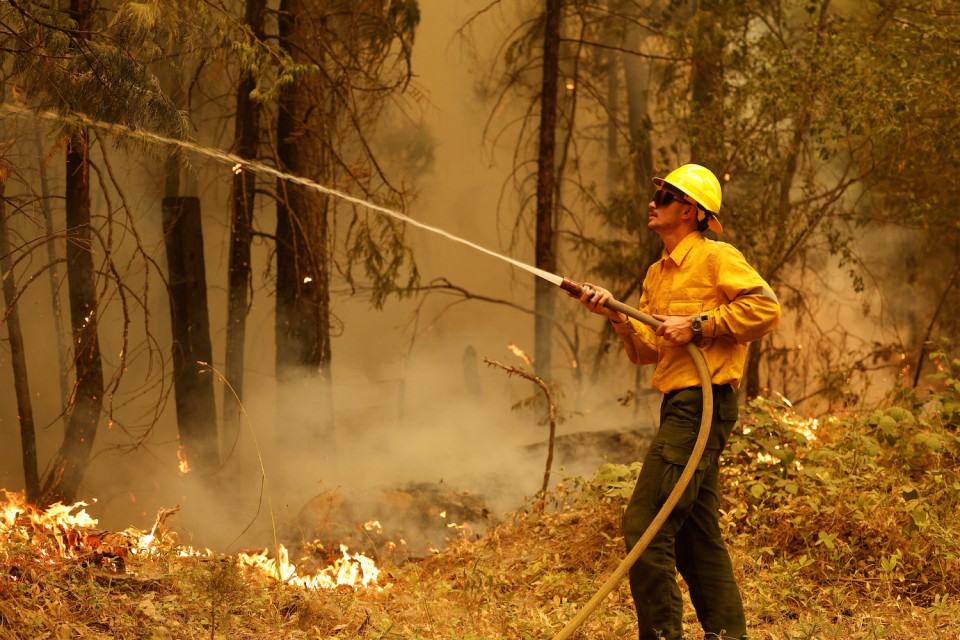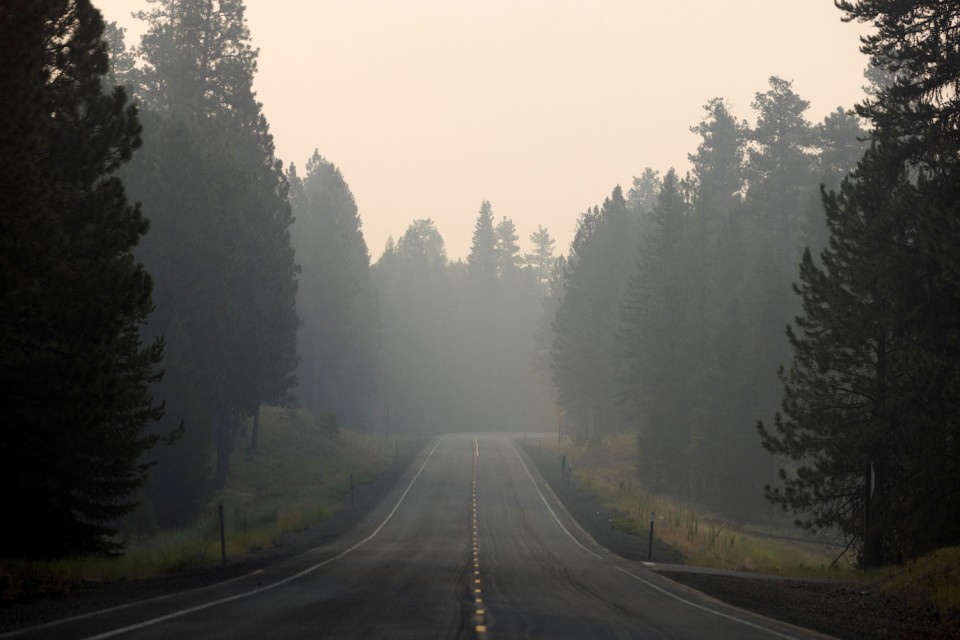
(Reuters) -Winds and lightning strikes have sparked and fanned wildfires across the Pacific Northwest this week, including the largest fire currently burning in the U.S., which was rapidly expanding near the Oregon-Idaho border on Friday.
The Durkee Fire near Huntington, Oregon, has scorched 600 square miles (1,600 square km), an area more than half the size of Rhode Island’s land mass, authorities said. It is threatening several towns.
The blaze was set off by lightning on July 17, and wind gusts up to 60 mph (100 kph) drove the flames across brush, timberland and ranches, killing hundreds of cattle. The fire was only 20% contained on Friday, officials said.
While there is zero chance of rain through next week, winds have dropped and cooler air is in store, said meteorologist Marc Chenard of the National Weather Service.
“Hopefully it gives firefighters a break,” he said.


As of Thursday, wildfires this year have burned almost 1 million acres (400,000 hectares) in Oregon and 125,900 acres in Washington, according to the Northwest Interagency Coordination Center in Portland, Oregon.
In 2020, the worst year in recent memory, Oregon wildfires scorched more than 1.14 million acres, according to a tally by CBS TV affiliate KOIN.
In California, the Park Fire, believed to have been started by an arsonist, has forced the evacuation of more than 4,000 residents in Butte County, about 100 miles northeast of Sacramento.
A suspect was arrested on Thursday, accused of pushing a burning car down a bone-dry gully.
The fire grew uncontrolled overnight from 125,000 acres on Thursday to 178,090 acres on Friday afternoon, according to the California Department of Forestry and Fire Protection. More than a hundred buildings had been damaged or destroyed.
“The biggest challenge with this fire is getting to it,” said Fire Captain Dan Collins. “It’s steep land with almost no roads. It’s hard to get our people and equipment to the fire lines.”
More than 1,600 firefighters were deployed to contain the blaze, CalFire said.
Forecasters warned that winds would reach 30 miles mph (50 kph) on Friday and through the weekend. Combined with low humidity, it is a recipe for rapid growth, officials said.
Smoke from fires in western Canada and the Pacific Northwest have brought hazy skies and unhealthy air from the Rocky Mountains to Minneapolis and as far east as Detroit, weather reports said.
Denver had the worst air quality in the U.S. on Friday and ranked the 30th worst in the world, according to IQAir, a group that tracks air pollution across the globe.
Much of the smoke coming into the Central and Eastern U.S. comes from a raging wildfire in the mountainous Jasper National Park in the Canadian province of Alberta.
The park and the town of Jasper, which draws more than 2 million tourists a year, were evacuated on Monday, displacing 10,000 residents and 15,000 park visitors. As much as half of the structures in the town could be damaged or destroyed, officials said, as the blaze burned more than 89,000 acres as of late Thursday.
Videos posted on social media show entire streets leveled by the blazes in the Alberta province, with scorched trees, charred metal skeletons of cars, and nothing but rubble where homes and businesses had stood.
(Reporting by Rich McKay in Atlanta; Additional reporting by Jonathan Allen; Editing by Rod Nickel, Sandra Maler and William Mallard)







